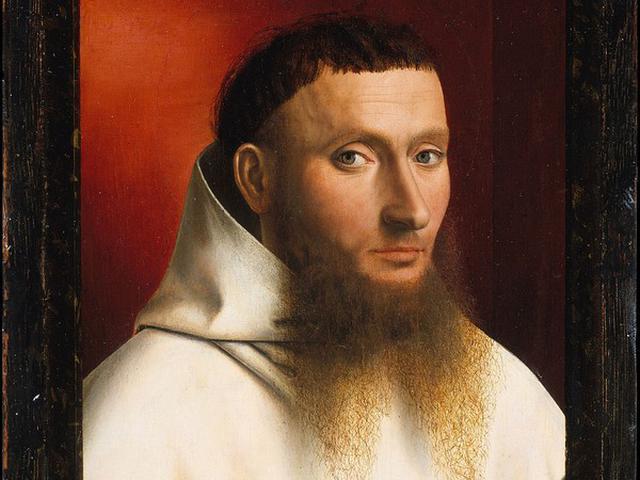Portrait of a Carthusian

This portrait was painted by Christus during the rule of Jan Vos as before Genadedal and most likely shows another member of the monastery. The sitter's lack of tonsure and beard identifies him as a lay brother, that is, someone who made a promise but practiced a more relaxed version of Carthusian life. It appears to be the first recorded portrait of a clergyman in which the person praying is not shown. The young man's confident, outward look suggests that the portrait was intended for a secular environment. He may have been commissioned by his family to celebrate his entry into the order and invoke the presence of the absent person, now committed to a life of seclusion.
Petrus Christus borrowed many techniques from Van Eyck for this particular painting. The frame surrounding the Carthusian monk is made to look as if the letters of his own signature were carved into the wood. These Northern Renaissance portraits exemplified the beginning in the artists' personal careers. Artists began to claim credit for their own pieces and began to incorporate pieces of themselves into this art. If we look at the fly, for example, at the bottom sitting in the frame, we are deceived by its illusion.
At first, it seems that the fly is part of reality, that the fly only exists outside of this painting. Some have argued that the presence of this fly is supposed to reflect the idea that an artist is responsible for creating these false realities, and that the images they have given are not actually reality, but an interpretation. During a time when art had played such an important role, especially in religious devotion, many believed that this art had true piety. This portrait is an example of how Northern Renaissance artists began to take control of their own work.
Petrus Christus, born 1420, Baerle, Brabant and died 1472/73 in Bruges. Southern Dutch painter who supposedly introduced geometric perspective to the Netherlands. In 1444, Christus became a citizen of Bruges, where he worked until his death. He is believed to have been trained in Jan van Eyck's studio. His mature naturalistic style, characterized by jewelry execution, is a simplified adaptation of the style of his supposed master. But some of his motifs and compositions were drawn from the emotional tradition of early Dutch art.
© Tourblink